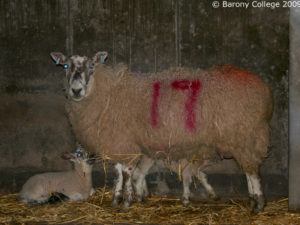Getting It Right
16 March 2017A reminder of some key timing for the time of year.
Haulage During Pregnancy
You are not permitted to transport any animals for welfare reasons when they are more than 90% through the gestation. An example of this would be, a sheep gestation is 147 days, so she can travel up to 130 days, unless being transported to a vet. Ewes can become stressed extremely easily through handling and haulage when heavily in lamb. Stress at this time can trigger conditions such as twin lamb disease, distress and injury.
Legislation forbids the transport and sale of lambs with an unhealed navel and ewes who have given birth in the last seven days. An exemption to this is when they are being moved under 50km (between or within farm premises) if the journey is for the purposes of improving the conditions of birth as long as it’s not causing unnecessary pain or suffering.
Castration
There are three methods – rubber ring, emasculator or open/surgical which must be carried out by a vet. Castration must be carried out by a competent person after the ewe/lamb bond is established. For devices which restrict the flow of blood to the scrotum or the tail such as the rubber ring, the procedure must be carried out in the first week of life. After a week of life anaesthetic must be used.
Any lambs castrated after 3 months of age must be carried out by a vet using anaesthetic.
Tail Docking
There are three methods (rubber ring, hot iron or emasculator). There must be sufficient length of tail left to cover the vulva in female sheep or the anus of male sheep.
Kirsten Williams, kirsten.williams@sac.co.uk
Sign up to the FAS newsletter
Receive updates on news, events and publications from Scotland’s Farm Advisory Service

